“‘Improve’ [air quality] is not the standard we want… You could have technically an improvement, but it could be immaterial and the air is still not safe for and healthy for children.”
— Julia Brim-Edwards, Portland Public Schools Board member
Even though drivers on Interstate 5 through north Portland already emit unhealthy levels of toxic gases from their cars and trucks, the Oregon Department of Transportation wants to widen it and bring those vehicles even closer to the kids who attend Harriet Tubman Middle School.
“Not ‘do no harm’, ‘do better’.”
— Brendan Finn, ODOT Urban Mobility Office director
Poor air quality is why Portland Public Schools spent $20 million on a new air filtration system when the school reopened in 2018. It’s also a big reason why ODOT’s I-5 Rose Quarter project is so controversial. In 2018 a Portland State University air quality study (PDF) said outdoor activities should be limited, and in April 2019 Tubman students donned masks at a rally against the project.
At a meeting of the project’s Executive Steering Committee Monday night, Portland Public Schools Board Member Julia Brim-Edwards (a top executive at Nike) tried to strengthen ODOT’s commitment to air quality around Tubman. She targeted the ESC’s “Values Statement” (PDF) which includes a section titled, “Climate Action and Improved Public Health”.
At the previous meeting in September, Brim-Edwards proposed new language in the Values Statement that would specifically reference Tubman. Her desired text was: “Air quality on the grounds of Harriet Tubman Middle School and adjacent Lillis Albina Park is at a level medical and public health officials say is safe for children and public use.”
That language wasn’t acceptable to ODOT.
Advertisement

ODOT Urban Mobility Office Director Brendan Finn said the agency could only “improve” air quality. “That is an outcome the agency could have a high level of confidence that we could accomplish,” Finn said. “Not ‘do no harm’,’do better’.”
Metro Council President Lynn Peterson (whose Measure 26-218 is being strongly opposed by Nike) then quickly chimed in to support ODOT’s language. But Brim-Edwards wanted more of a discussion because she was still unclear whether her proposed language had been added to the Values Statement. It had not. Finn inserted his language into the document and failed to discuss the issue with Brim-Edwards prior to yesterday’s meeting where the Values would be voted on for formal adoption.
“I think ‘improve’ is not the standard we would want,” Brim-Edwards said. “The concern is with the language that Brendan [Finn] suggested you could have technically an improvement, but it could be immaterial and the air is still not safe for and healthy for children to be outside. And that would not just be for the school district grounds, but also for anybody who’s recreating in the adjacent Portland parks,” she continued.
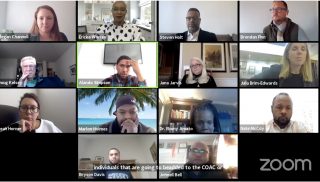
The Values Statement was then adopted 10-1 with Brim-Edwards as the only “no”.
When Brim-Edwards continued to press Finn on the “improvement” language, he said his intention was to create a metric to have a baseline to compare to.
To which Brim-Edwards asked, “So if this is a metric, what are you suggesting the level of improvement be? Was the improvement based on consulting with health professionals?” Finn then referred to ODOT’s existing air quality study and said he would get Brim-Edwards the information after the meeting. When Brim-Edwards continued to express her concerns, ODOT Project Manager Megan Channell came to Finn’s aid to say metrics could be part of “a conversation” to happen later in the process.
“What was just approved though, is a standard that may still be unhealthy for students who are outside Harriet Tubman are in the adjacent park,” Brim-Edwards continued, while trying to press her case. Then meeting facilitator Steven Holt abruptly ended the discussion.
Later in the meeting, TriMet General Manager Doug Kelsey said he felt Brim-Edwards was “shunted aside” and “kind of cut off a little bit.” “I don’t want to led that go. It was a bit edgy how we just moved off and just put her on the sideline and I don’t think that’s fair to fellow members,” he said.
After the meeting I asked Brim-Edwards if she felt her concerns were addressed. “No, and I was surprised that there was a rush to adopt and validate the inadequate language,” she replied. “They have not provided baseline data for this metric they’re proposing and it’s not clear the ‘improvements’ would meet public health standards for air quality for children or youth.”
Back in September a different advisory committee for this project was disbanded and 14 of its members said ODOT did it to silence opposition. Earlier this month the City of Portland made the unprecedented decision to completely withdraw as a partner on the project due in part to ODOT’s repeated failures to act on stakeholder input.
— Jonathan Maus: (503) 706-8804, @jonathan_maus on Twitter and jonathan@bikeportland.org
— Get our headlines delivered to your inbox.
— Support this independent community media outlet with a one-time contribution or monthly subscription.



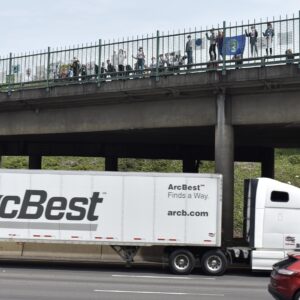
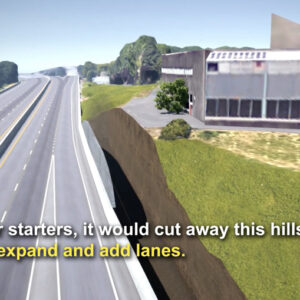
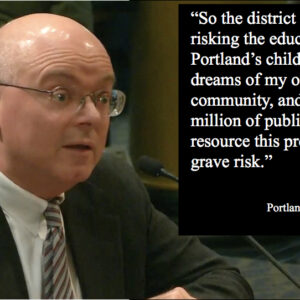
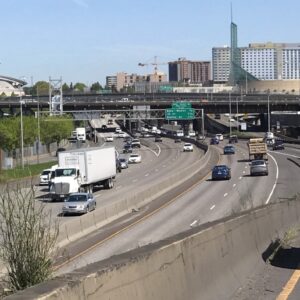
Thanks for reading.
BikePortland has served this community with independent community journalism since 2005. We rely on subscriptions from readers like you to survive. Your financial support is vital in keeping this valuable resource alive and well.
Please subscribe today to strengthen and expand our work.
The callout quote says that Brim-Edwards is on the board of the PPB, not PPS. I do love the idea of a PPB board though.
yikes. My mistake. Fixed it.
Can I nominate ODOT for the role of the Super Villain in the next Avengers movie. The seem intent on getting ready for the role.
Like all super villains, ODOT is just misunderstood by our naive heroes. They are simply giving in to public wants and desires, no doubt fueled by those other super villains in advertising and big auto.
“You guys are the real heroes. We’re just glad we can help.”
The public desires to squander money on a massive highway project that ODOT has admitted won’t really improve congestion on I5? Is the public really clamoring for that? I believe that at this point ODOT has taken on a kind of ideology similar to a cancer cell, where it wants to build roads even if that activity kills the host.
Oh Heavens Yes!! A yuge upswell of Oregon voters from throughout the state** elected the Democratic governor and local Democratic legislators to do just that!
** Aside from a vocal and misguided minority in the Portland area.
In my experience, likely an exclusive tactical pre-meeting/private-conversation took place among interested parties to facilitate swift adoption of the sneaky-change, in order to gracefully bulldoze opposition.
Good for Doug Kelsey, TriMet for recognizing that she was being marginalized and silenced. Where was Lynn Peterson, Metro? What about Leah Horner form the Governor’s office? What do they have say about this behavior? They are complicit in rubber-stamping ODOT’s sham process, but I would genuinely like to hear what they think about the exchange and hear them explain whey they did not say anything and how they justify rushing a vote for such meaningless/toothless values statement.
Does anyone know of any public DOT nationwide that can promise (or has been willing to promise) “Air quality on the grounds of _______ School and adjacent ______ Park is at a level medical and public health officials say is safe for children and public use”, that is right next to one of their busiest automobile-dominated facilities?
The City of Portland (PBOT) has several streets next to Harriet Tubman, would they be willing to make such a similar promise?
Maybe not, but if they were asking to spend nearly a billion dollars, it would be legitimate to press them on it.
ODOT is probably trying to get away with a temporary “improvement” as the standard. They decrease congestion for 1-2 years in their projections, call it an “improvement” and then ignore what happens afterwards. Having a fixed metric of “healthy for children” would be difficult to meet over time with increasing traffic projections.
It’s fitting, ODOT and Metro are birds of a feather when it comes to lying about their infrastructure projects.
> ODOT Urban Mobility Office Director Brendan Finn said the agency could only “improve” air quality. “That is an outcome the agency could have a high level of confidence that we could accomplish,” Finn said.
I also have a “high level of confidence” that air quality will improve (with or without ODOT’s involvement). The air quality will improve as gas and diesel give way to batteries in the vehicle fleet. With that happening without any help from ODOT, surely ODOT could do better – if they actually cared to try.
The reality is that ODOT is tasked by the Oregon state legislature and governor to ram through a highway project of a community that doesn’t want it, and that community and its supporters will continue to make demands that they know cannot be delivered. It’s a lot like Trump versus the Democrats in the House – both groups seem to enjoy taunting each other, but at public expense and a total waste of tax dollars. Who are the winners? Politicians trying to get re-elected. Who loses? Pretty much everyone else.
Are you saying people who live near or have children attending schools near a freeway do not have legitimate questions regarding the purpose and safety of this freeway expansion? Do these people benefit in any way from this project?
They might directly benefit if they use the freeway for travel and enjoy faster trips. They might indirectly benefit if services or products they use cost less because they can be delivered faster.
Are these people any less “NIMBYs” than those who oppose other changes to their neighborhoods that they feel will impact them or their families negatively?
ODOT’s study did not legitimately show any lasting effects on safety, pollution or congestion. There is no evidence that products would cost less due to this project.
If you lived in a community with a mine or coal plant, where many of your neighbors and children had asthma and lifelong chronic illnesses as a result, would you be a NIMBY?
I do not oppose highway projects that improve connectivity and have a benefit. This project has zero benefits both to the adjacent communities and the larger state as a whole.
If there are no benefits to the project, then of course people won’t benefit from it; your underlying assumptions make your question rather circular.
I do not call people NIMBYs, even if they want a different outcome than I do; I’d rather understand their point of view than shut them down with an insult. I also support believe in giving those most negatively affected a louder voice, regardless of whether I support or oppose the underlying project, and regardless of whether or not I agree with their point of view. My ethics, civility, and respect for others is not situational.
So no, in your example, I would not call those people NIMBYs, even if I knew that others, perhaps worse off, depended on the coal that came from that mine.
I would agree calling someone a NIMBY doesn’t really solve the problem or provide a greater understanding. In that line ODOT disbanded the community advisory committee because they were not interested in hearing dissenting views from people living in the community. They also admit the project would not “meaningfully alter the cumulative socioeconomic effects of past, present and reasonably foreseeable future actions.”
These aren’t assumptions. ODOT’s own limited Environmental Assessment showed no legitimate evidence for lasting benefit in congestion or safety. That is likely the reason they were not keen on providing a full EIS. If our goal is to be informed as best we can and make good decisions when investing $800 million, sidestepping an EIS and disbanding the community board are not signs of informed decision making.
Just in case all my other comments on this topic have not made it clear, I strongly oppose this project, just as I oppose the I-205 expansion that gets very little play here. I actively worked to demand ODOT go through the EIS process, and lobbied both the city and Metro to cut support for the project. I will do more in the future should it prove necessary.
That is to say: I don’t need to be convinced this is a bad project. I’m wholly on board.
Everyone has a basic constitutional right, and I’d argue a basic human right too, to protest decisions by their government and to ask to have their government redress grievances. We live in a representative form of government whereby we directly elect governors, other state office holders, and legislators to run our state governments (those of us who vote and participate in governance, that is.) If the same people we elected turn around and do something that grieves us, wouldn’t it be wise to consider replacing that person by voting for someone else? If one keeps voting for the same person and nothing changes or it gets worse, then what would you call that voter?
Keep in mind the freeway has already been at this location for 56 years at the behest of the city, county, state, and Feds, plus local residents, many of whom are long gone. The pollution it generates is caused in part from local use, by Portland residents and businesses. Expanding the freeway adds a bit more pollution, but the vast majority of the pollution was already there even without the expansion. IMO, if Portlanders were smart about this, they’d be using the expansion to negotiate to mitigate some of the 56-year-old impacts that previous city and state governments and residents have imposed upon you, the current residents. Instead what I’m hearing is steady diatribe of “we don’t want this no way, period.” By refusing to participate, you hope it will go away. But the present negative impacts of the pre-existing freeway are still there. Why wouldn’t you try to fix them if given an opportunity?
You ask how local community residents and businesses may benefit from this project. Technically, assuming traffic congestion is reduced (not likely but possible) the local community will have greater access to jobs and services by not having to drive as long. If they are employed in services that the builders use, they’ll be employed longer at public largess. If the community negotiates positively in good faith with the state (which I have yet to see), the state will likely try to mitigate some of the increased negative impacts of the project such as increased noise pollution. You might even get the state to pay for some long-cherished bike projects.
But in a political contest of the city and its vocal inner-city residents versus a very determined state, the state always wins. Those with the Gold, Rule.
Yes, of course… but only if the potential replacement had the basic skills to do the job. Also, if your threshold for being “aggrieved” is too low, who’s to say the alternative you choose won’t aggrieve you even more when faced with the realities of governing and doesn’t implement the simplistic solutions you support?
HK, I lived in Portland 1997-2015, first in Goose Hollow, then Sullivan’s Gulch (2002-6) and finally in Hazelwood (near 102nd & Burnside). When I did advocacy in inner Portland, like everyone else, I opposed pretty much everything that ODOT and other outside agencies wanted to do, but supported the best bike infrastructure. My 8 years of successfully getting $400 million in projects funded for East Portland taught me several things:
1. It’s easier to get a project funded if you already live in a poor district.
2. It’s easier to get what your community wants or needs if you agree to work with agencies rather than oppose them every step of the way.
3. If you sell your soul and openly support unpopular agencies and politicians, you are more likely to get your pet projects funded later on.
4. If you analyze agency budgets 3-7 years in advance and figure out what kind of stuff they’ll fund (or haven’t yet committed to), you can get lots of projects (and expensive projects) funded.
5. A cancelled project is a huge source of funding, as the agency already committed a set amount of cash annually to pay for it through muni bonds. For example, when the CRC was cancelled, ODOT’s annual payment on it of $27 million was suddenly up for grabs, for the next 30 years.
I no longer live in Portland nor am I likely to ever move back (I can’t afford it), so I have “no skin in the game”. However, it saddens me when inner Portland advocates are so, well, kinda dumb about getting funding for transformative bike projects. They openly oppose everything that they could use to leverage for lots more money, rather than conditionally support controversial projects with lots of funding. And city residents keep electing a city council that has no spine nor any expertise in managing a city. As soon as a councilor becomes truly effective and good at their job, they get voted out, caught in a scandal (Adams), or dies in office (Fish).
You advocate for the I5 RQ project because of its “transformative bike projects”?! I am a more than a little shocked. Perhaps take a look at the design again. None of the on-road bike facilities are protected other than a short segment on Williams and the near-pointless Clackamas bike bridge. PBOT could build those short segments in a couple weeks if they had political support and a tiny rounding error on the cost of this project.
Read the Bicycle Advisory Committee’s letter.
I’m not advocating for the RQ project – I no longer live in Portland and couldn’t give a crap about it.
But I am suggesting that local advocates sell their collective souls and embrace the RQ project to glean funding out of it for transformative local bike projects, then design those transformative bike projects to fit your collective needs.
Not exactly sure of your point. I would have to question how representative our government is. In the US at least as we know due to Citizens United v FEC, most candidates are paid for by largely uncontrolled funds from corporations. But again, I’m not exactly sure how the people living in communities adjacent to a freeway benefit from this project in any reasonable way.
When you start from the premise that a project offers no benefits, it’s not hard to arrive at the conclusion that those who live near it do not benefit from it.
Please explain the relevance of Nike to this article. Otherwise, I suggest edit to delete.
Mentioned twice:
“Portland Public Schools Board Member Julia Brim-Edwards (a top executive at Nike) tried to strengthen ODOT’s commitment to air quality around Tubman.”
and later,
“Metro Council President Lynn Peterson (whose Measure 26-218 is being strongly opposed by Nike) then quickly chimed in to support ODOT’s language.”
How big of an employer in Portland is Nike? Do they have any local clout outside of Beaverton?
Fordist capitalism, as epitomized by Nike, is one of the central reasons that 100,000-300,000 people are estimated to die each year in the USA due to air toxic-associated pathology.
From an environmental health standpoint, would you rather have lived in the anti-capitalist Soviet Union?
The USSR was a state capitalist economy that made Fordism its primary measure of economic progress.
https://en.wikipedia.org/wiki/State_capitalism
https://dash.harvard.edu/handle/1/10288949
Too many big words there for me. What made the Soviet industrial system capitalistic, and how does that differ from other modernized non-capitalist societies (if there are any)?
Only two options? SMH….
I’ll take Costa Rica for the win.
That was a dumb place to put that school to begin with. Seems like most students arrive by car anyway.
Like much of the city: the school came first THEN the interstate.
OPB: “Harriet Tubman Middle School and poor air quality have a long history. The Tubman building went up in 1952, initially as Eliot Elementary School. Interstate 5 was built next to it several years later.”
https://www.opb.org/news/article/tubman-middle-school-air-quality-fixes-portland/
Back when it was an elementary school it was likely a walking school vs. a bussing school. (My assumption.)
The point being given the daily (pre-convid) traffic jams from parents DRIVING their kids to school, it doesn’t seem well located for many people.
People drive for other reasons than, “the school is hard to get to”.
They drive because society has habituated cars with indoctrination that starts in childhood. With toys like Matchbox Cars, Transformers and slot car racers. With video games like Grand Tourismo, Need for Speed and Forza. With pop culture like Fast & Furious, Cars, Transporter, Gone in 60 Seconds, and The Cannonball Run.
I guarantee you, if people consciously evaluate the use of cars to get their kids to school, it would go like this, “cars are the best for of transportation”.
With all the remote learning during the pandemic, do we really need the school buildings at all?
Only if the pandemic ends.
It all depends on if the Democrats want it to end.
Nor does the flu, the common cold (the first 4 known corona viruses), cancer, and the ever increasing number of pedestrians killed by car drivers give a damn about opinions. It’s how individuals, communities, and governments react to it, including by politicians and political parties, that matters.
Buildings, we don’t need no stinkin’ buildings!
Video games have nothing to do with these parents driving their kids to school. Come on.
According to WW, Tubman also closed in 2012 and then reopened on the same site in 2018. Why would anyone reopen a school with a known air quality issue?
The school was built in 1952. The freeway was built in 1964.
Dumb place to put a freeway.
Hey, it’s a free(way) country; the DOTs can connect however they like! /s
Sounds like there has been 56 years to move the school, also.
The school was there, then the freeway.The school was closed due to lack of students. If PPS was really concerned about student health,they would have relocated the school rather than re-opened it. PPS can’t manage it’s way out of a paper bag.
Perhaps ODOT could purchase Tubman school site, and work with PPS to relocate the school in a location that is superior. If that’s not feasible, this project should not go forward.
The school and freeway have been immediate neighbors since 1964, so what is that, 56 years now? It’s not like it’s the only public school next to a freeway, there are several others citywide (Lincoln High, Oliver Lents Elementary, Jason Lee Elementary, and PSU). Portland has lots of good reasons for not wanting the freeway expanded besides this school, and the state government, including the governor and Democratic-controlled state legislature, seem equally determined to ram it through.
I find it fascinating the opposition to expanding I-5, but no opposition to the funded expansion projects on I-205 in East Portland.
Most people here (including those running the city) hardly know East Portland even exists.
Alas, too true.
David,
I agree- it is so strange that there is no opposition to the 205 project. It is significantly longer, there is even less justification, it will cost a fortune in dollars and carbon.I am also surprised that the anti-tax crowd is not crying about these projects- thee will likely be paid for with state taxes plus tolls!
At this point, they should just move the school. Next to a freeway is an inappropriate place for a school.
Just like Lents Elementary, PSU, Lincoln High School, and many others?
Benson, Wilkes, Parkrose… Maybe building interstates through cities was a bad idea?
Or maybe both freeways and schools are built where land is cheapest and local opposition is weakest?
Yes, and they might as well move all the other adjacent public spaces, homes, and businesses while they’re at it. Next to a freeway is an inappropriate place for people.
Sounds like it might just be easier to remove the freeways, in that case.
But people have a choice where they choose to rent or buy.
That’s where Lynn Peterson was or is.
We need Chris Smith at Metro, but I hate to wish years of hell on him.
Remember: Lynn is a highway engineer. That’s her training, and her early work.
Actually Lynn’s academic training looks more in alignment with environmental engineering and planning so less “highway optimization” per her LinkedIn … plus her professional state of practice should put her closer into alignment away from a traditional ODoT perspective. (I am at a loss what her strategy is for this project…and I have not asked…perhaps it is strategic horse trade for something bigger and better for the region.)
Chris has been in the transpo trenches long enough to know the firefight he is entering…
FWIW, I strongly oppose this project, and ODOT’s handling has been atrocious. That said, a “values statement” need not–arguably *should not*, contain specific metrics or specifications. It is a statement of guiding principles for reference when those more specific blueprints are being formulated. If ODOT were better at management, they could emphasize this point, and this story is a nothing-burger. Now, when the actual specs/measure-ables of the project are penned, that’s when the ESC should go to the mat to ensure adequacy and accountability of/for desired outcomes on a granular level.
I don’t remember the outrage when this happened:
https://katu.com/news/local/portland-school-board-votes-to-close-harriet-tubman-humboldt
Oh wait, it didn’t affect straight white people when this happened.
ODOT won’t commit to healthy air quality because they don’t have to since Trump deregulated air pollution controls nationwide.